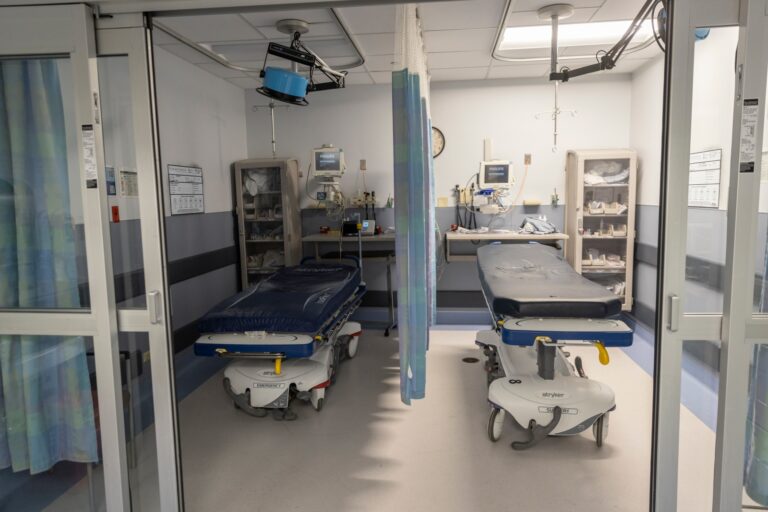CHICAGO — Gov. JB Pritzker on Friday released a blueprint for transforming what the state acknowledges is a confusing patchwork system for families who need greater access to mental health care for their children at a moment of overwhelming need both in Illinois and across the country.
The current fragmented system, compounded by a workforce shortage, has fueled a lack of access for children with complex mental health needs. That’s led to “substantial wait times” in emergency rooms and hospital psychiatric units, the report found. In some cases, parents have given up custody to the state so their children could get into residential treatment facilities, where children stay to be stabilized.
The wide-ranging report lays out ways to repair the frayed connective tissue that permeates the health care system, from providers to government agencies. This, in turn, would ease the burden on families navigating a difficult and scary moment as their children seek help.
“I think that providers and system leaders are all in this for the same reason,” Dana Weiner, the main author of the report and a senior policy fellow at Chapin Hall at the University of Chicago, said in an interview with WBEZ. “They are trying to deliver services to help children and families. I think we can do that more efficiently and effectively, and this blueprint charts a course for how to get there.”
Pritzker launched the Children’s Behavioral Health Transformation Initiative a year ago amid the youth mental health crisis, and tapped Weiner to lead it. She and her team went on a listening tour of sorts around the state, meeting with hundreds of mental health providers, state agency leaders, families and children to understand barriers they face and ideas on how to improve. They analyzed state data and researched how other states and counties around the U.S. provide behavioral and mental health care. Weiner called the collaboration among six Illinois agencies that play a role in pediatric behavioral and mental health “unprecedented.”
The wide-ranging report includes a set of 12 strategies, with short to long-term goals. A central goal is to provide services earlier to try to prevent more serious problems down the road. Recommendations include creating an online portal for families to make it easier for them to find the care they need. Pritzker mentioned this in his proposed 2024 budget speech. Now, there is no single place where parents can look up community behavioral health providers, for example.
The report calls for expanding who is eligible for services so more children have access, such as increasing in-home behavioral health support or developing more transitional housing for children being discharged from the hospital but need to wait for space in a residential facility. After expanding access, the state would have a better idea of how to adjust the supply of inpatient psychiatric beds in Illinois, the report found.
There’s an emphasis on early prevention by universally screening children in schools and at the pediatrician’s office for mental health needs, and getting state agencies involved in behavioral and mental health for children to coordinate better and share data. It’s tough for the state to plan what kind of services might be needed without knowing what kind of care children receive now and where they’re getting it, the report said.
The lack of monitoring what’s actually happening across the state could lead to “inadequate, duplicative, uncoordinated, or undesirable combinations of services,” according to the report.
There’s also the ripple effect on children and their families.
“Barriers to information sharing between state agencies push families to resort to emergency room visits or crisis hotline calls as the surest way to receive emergency mental health services, a far distance from early interventions,” the report said.
The state should create a central dashboard to measure the gap between which services children need compared to what is available, the report recommended.
And there’s an emphasis on more transparency in the typically private health care industry. The report recommends that residential treatment facilities must regularly report to the state how much capacity they have and what their staffing situation looks like. This is critical because the health care workforce shortage fueled by the COVID-19 pandemic has made it hard for some providers, particularly in mental health, to treat patients without long wait times.
The state should also centralize oversight of beds at the residential treatment facilities. Currently various state agencies pay for this care, but there isn’t one agency that oversees capacity or quality, the report found.
Building the workforce so there are more health care workers to treat more children is key to this overall plan.
Weiner said the initial costs to implement short-term goals is around $23 million for the fiscal year that starts on July 1. That would include creating the public portal for families and expanding eligibility for certain services. She declined to say how much implementing the entire plan is estimated to cost.
Some of the recommendations might include legislative approval — and perhaps a shift in the way everyone from providers to state agencies think about how they work together, Weiner said.
“Those can be some of the hardest things to accomplish,” Weiner said.
Still, she said she’s hopeful, nodding to the collaboration she has experienced over the past year.

